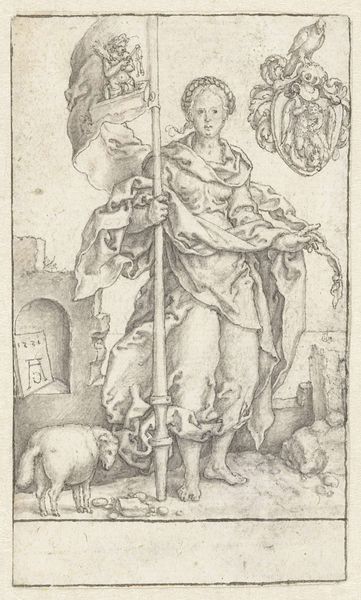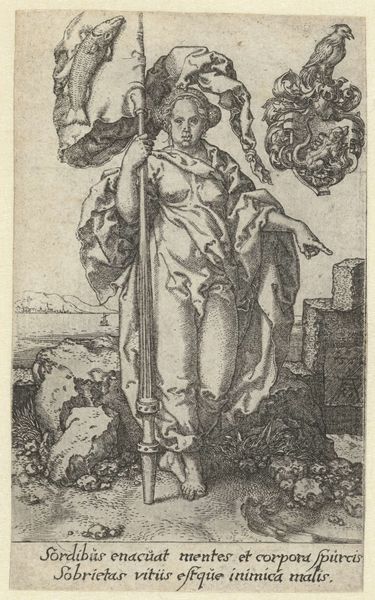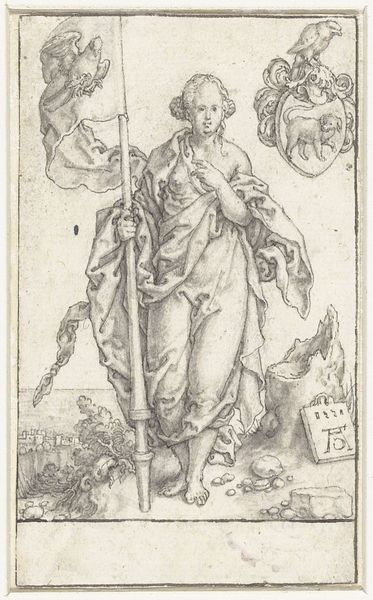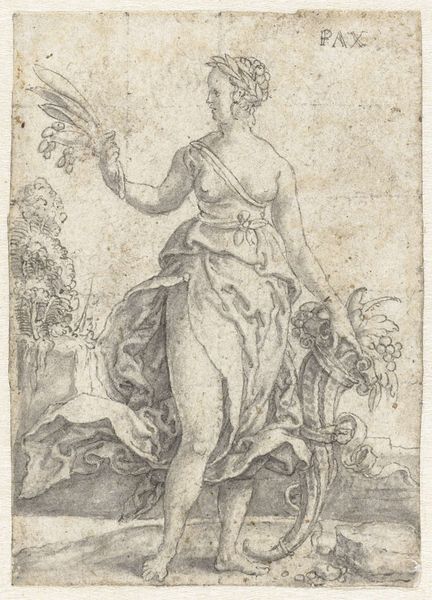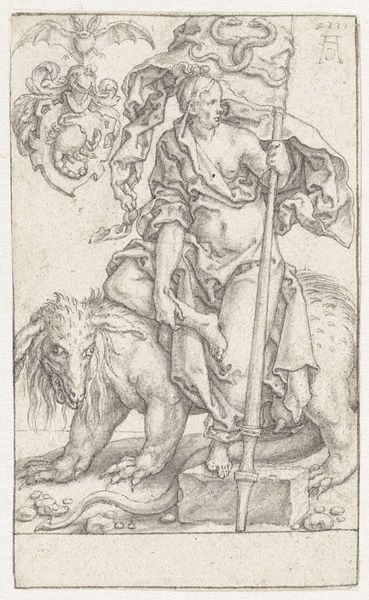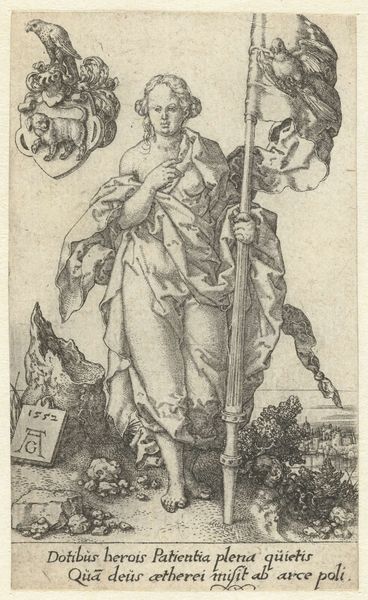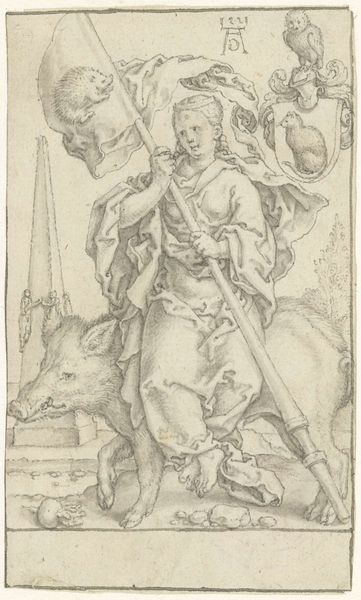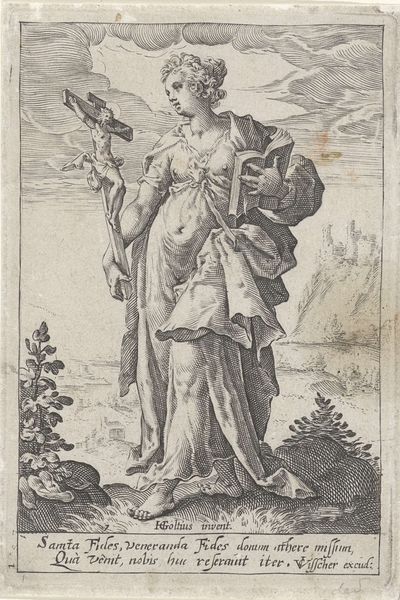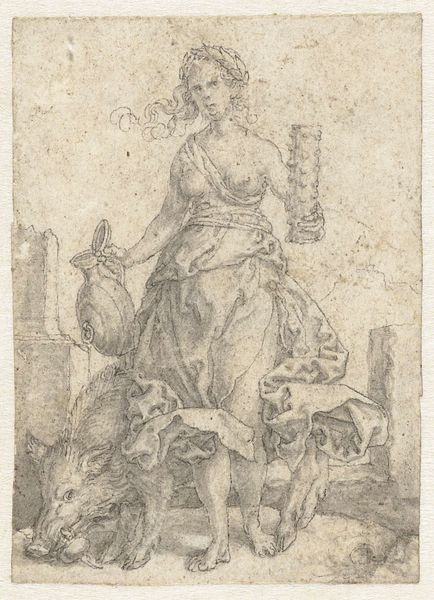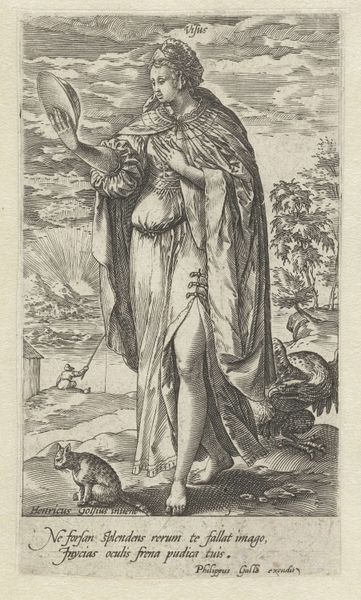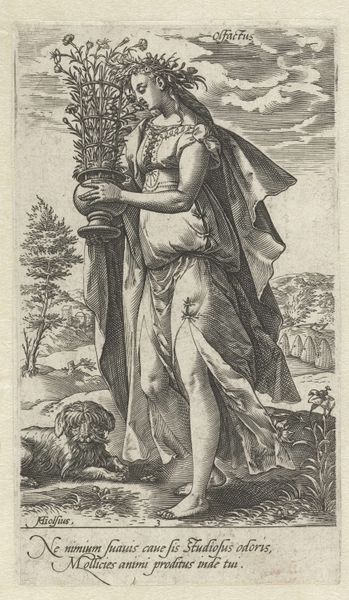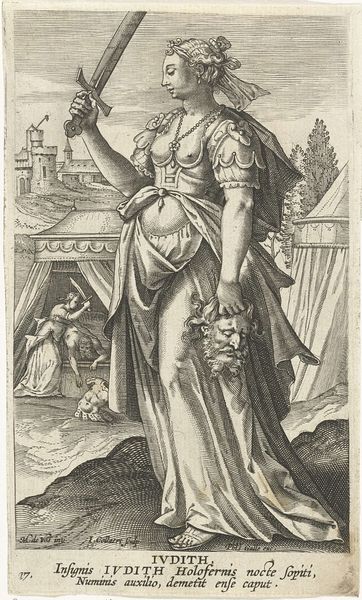
drawing, intaglio, pencil
#
portrait
#
drawing
#
allegory
#
intaglio
#
mannerism
#
figuration
#
pencil
Dimensions: height 105 mm, width 61 mm
Copyright: Rijks Museum: Open Domain
Curator: Welcome to the Rijksmuseum. We’re standing before "Gematigdheid," or "Temperance," a compelling intaglio print made in 1551 by Heinrich Aldegrever. Editor: It has an austere yet dignified feel, wouldn't you say? I'm struck by how the draping of the robes accentuates the figure's presence, emphasizing form with delicate, almost mathematical precision. Curator: Indeed. Aldegrever, influenced by Mannerism, was fascinated by allegorical figures and their symbolic roles within the broader socio-political discourse of the Reformation era. Note how Temperance stands before the blocks representing her careful control. Editor: It’s interesting you mention blocks. Look closely; they seem rough-hewn. The intentional lack of refinement seems to speak volumes about labor practices of the time, hinting at a connection to burgeoning craftsmanship guilds, yes? And consider how Aldegrever has fashioned a flag with flowing fabric contrasting the figure. Curator: Precisely. And it extends to the coat of arms with the bird figure—a hawk?—perched at the top, all elements serving to elevate the virtues of self-control and balance which Aldegrever aimed to showcase for his wealthy clientele. It suggests an idealized view promoted amongst the patrician class. Editor: The contrast between the roughness of the landscape setting and those patrician signifiers seems purposeful. This tension raises questions about who had access to “temperance” in the first place, doesn’t it? Curator: That's the crux of the matter! Aldegrever skillfully uses imagery of balance, the scale, the bridle to convey to a particular audience the ideals of moderation that would help to justify a new social hierarchy emerging in Northern Europe at the time. Editor: Ultimately, seeing these older prints always brings a fresh perspective to current day consumption and production values. How perceptions change... or perhaps how they don't! Curator: Quite true. I believe understanding its production, and its reception then and now, are all crucial to grasp how it reflects shifts in cultural values throughout history.
Comments
No comments
Be the first to comment and join the conversation on the ultimate creative platform.
